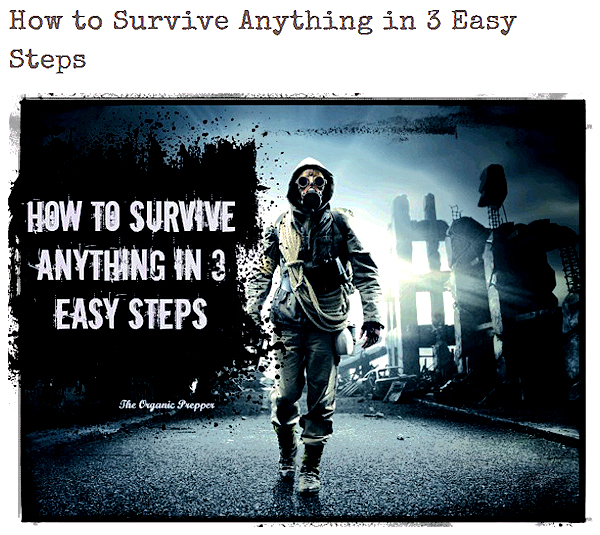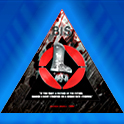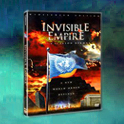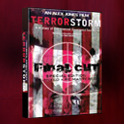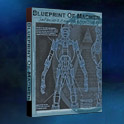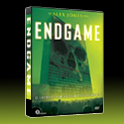welcome
|
||||
Surviving WTSHTF"By failing to prepare, you are preparing to fail."-- Benjamin Franklin --
Surviving The Coming Collapse with Survivalist James Wesley Rawles 1/2
On this Friday, February 17 edition of Infowars Nightly News, co-host Rob Dew interviews New York
Times best-selling survivalist-fiction author, blogger, and survival retreat consultant James Wesley Rawles about
his latest book, Survivors: A Novel of the Coming Collapse. The novel combines useful "how to" information with a
compelling fictional
Surviving The Coming Collapse with Survivalist James Wesley Rawles 2/2
On this Friday, February 17 edition of Infowars Nightly News, co-host Rob Dew interviews New York
Times best-selling survivalist-fiction author, blogger, and survival retreat consultant James Wesley Rawles about
his latest book, Survivors: A Novel of the Coming Collapse. The novel combines useful "how to" information with a
compelling fictional
http://www.survivalblog.com/writings.html
The Impending Economic Collapse with Survivalist
The Impending Economic Collapse with Survivalist James Wesley Rawles
How to Survive The Deadly Summer of 2012
How to Survive The Deadly Summer of 2012
When Technology Fails with Environmentalist Matthew Stein 1/3
Darrin talks with environmentalist, bestselling author, and MIT trained engineer Matt Stein who
recently penned an article entitled 400 Chernobyls: Solar Flares, EMP, and Nuclear Armageddon. Stein's latest book
is When Technology Fails.
When Technology Fails with Environmentalist Matthew Stein 2/3
Darrin talks with environmentalist, bestselling author, and MIT trained engineer Matt Stein who
recently penned an article entitled 400 Chernobyls: Solar Flares, EMP, and Nuclear Armageddon. Stein's latest book
is When Technology Fails.
When Technology Fails with Environmentalist Matthew Stein 3/3
Darrin talks with environmentalist, bestselling author, and MIT trained engineer Matt Stein who
recently penned an article entitled 400 Chernobyls: Solar Flares, EMP, and Nuclear Armageddon. Stein's latest book
is When Technology Fails.
Preppers Creed Government Will Not be There For You In a Crisis
Preppers Creed Government Will Not be There For You In a Crisis
Secrets of Radiation Fallout Survival: John B Wells
Secrets of Radiation Fallout Survival: John B Wells John B Wells of Coast to Coast fame sits down with unnamed government insider to discuss Fukushima, and how to survive radiation fallout. This information could save your life.
This is How You Fight Back Against TheConsciousResistance | First published at 18:06 UTC on March 23rd, 2020. Derrick Broze breaks down how you can push back and survive during the COVID-19 pandemic, and, in general, the coming technocratic state. https://www.theconsciousresistance.com/howto Help Keep The Conscious Resistance Network alive! https://fundrazr.com/supportconsciousresistance Support our work AND get a free ounce of Kratom to help with fatigue, stress, addiction, and pain: http://broze.freeounceofkratom.com Please help us advance truth, healing, community building, and empowering the people to wake up and
build a better world: https://paypal.me/consciousresistance
Oath Keepers Emergency Collapse Plan
Radiation Levels Have Increased in North America
What is Survival Shield®? Survival Shield® is the Infowars Life brand
of standardized nano-colloidal nascent iodine. It is manufactured with a unique transformative bio-elemental matrix
using a revolutionary process to make it gentler on your digestive system than other iodine supplements.
Pandemic Preparedness FREE Online How-To Course
12 Bad Strategies That Will
If you’re involved in the preparedness lifestyle, you’re
probably into planning. Most likely, you research and study the excellent preparedness strategies The trouble is, a lot of the plans that get made are more likely to get you killed than to save you. And people post these plans online, then new preppers read them and think, “Wow, what a great idea.” I really love being involved in the preparedness lifestyle. I get to meet and correspond with lots of like-minded, down-to-earth people. We have those awesome conversations that you just can’t have with the checker at the grocery store cash register. I get to engage in email and social media discussions too, the likes of which would never occur with my second cousin who thinks that missing a pedicure appointment is a disaster worthy of government intervention. But sometimes, I kind of cringe. Not all preparedness plans are well-thought out and practiced. In fact, there are several recurring themes that I hear or read that are not good ideas for most preppers, and I bet that many of you reading have also privately rolled eyes at one of the following strategies. (Or maybe even publicly.) I’m truly not trying to be mean when I share them with you here, nor am I trying to say that I’m the Queen Prepper of the Universe, who knows absolutely everything. I’d just like you to consider the variables if one of these plans happens to be your default strategy.
Bad Strategy #1: “I’ll just hunt and live off the land.”
Oh my gosh. No, you probably won’t. You might try to hunt, but guess what? Loads of other people have this same idea. Unless you live hundreds of miles from civilization, the population of deer and wild turkeys will be quickly decimated in an event that renders the food delivery system inoperable. Furthermore, hunting is not as easy as simply wandering into the woods, taking aim with a rifle, and popping a wandering buck in the head. Have you ever hunted? Have you done so recently, and by recently I mean within the past year? Have you ever field dressed an animal? Can you hit a moving target? Do you know how to set up snares? Do you know how to butcher and preserve meat? Are you in good enough shape to drag a 200 pound carcass through the woods? If you can’t say yes to every single question listed here, hunting should probably not be your go-to plan for feeding your family.
Bad Strategy #2: “I’ll go into the woods and live there.”
This is closely related to Bad Strategy #1. But it’s worse. Living in the wilderness is not going to be a marshmallow roast. First off, there are no marshmallows out there. Just lots of predators and food that has to be killed and skinned before you can eat it. In this strategy, people like to talk about their proximities to a national forest. “There are thousands of acres, just on the other side of my fence.” Okay. But when is the last time you went into that forest more than a few miles on foot? Did you spend more than a couple of nights there? Was the weather inclement? What are your local predators (not including the human variety)? Do you have a camping kit that you can carry in on foot? Will your children and spouse be able to also carry supplies? Are you planning to build a house with some tarps and a Swiss Army knife? What will you eat and drink? Are you adept at foraging in your area? For how long can you actually survive on what you can carry? How are your First Aid skills and what supplies will you have? Can you handle the loneliness? And what about the other, perhaps less than moral, individuals that have the same idea? Have you ever lit a fire with wet wood? Have you ever camped, outside of a campground area? What if it rains? In many climates, getting wet is a death sentence.
Bad Strategy #3: “I’ll bug out on foot for 73 miles through the mountains, even though I don’t regularly exercise.”
If bugging out on foot is one of your plans, I’d like to suggest you pick a clear day, put on a loaded backpack and some hiking boots, and go for a practice hike to your location. Go ahead. I’ll wait here. This one really bothers me. There is a large contingent of armchair preppers who have this idea. However, they don’t exercise regularly. They look back 20-30 years to their high school or military glory days, when they played football, ran track, or had a drill sergeant screaming right behind them as they ran. Just because you were once very physically fit, that doesn’t mean you are still able to hike up a mountain in bad weather with a 50 pound kit on your back. This is a classic recipe for a heart attack, by the way. Extreme over-exertion. High-stress situation. High-sodium, easily packable food. Out-of-shape person. A few miles into the journey, particularly if it includes a steep climb, the person will experience a pounding heart, dizziness, and faintness, as the body tries to shut down to protect itself from the unaccustomed demands. If the physical stress continues, the heart won’t be able to keep up with the demand to pump blood. Game. Over. Embarking on an overly ambitious bug-out journey can endanger not only you, but the people making the trek with you. What if you have a heart attack half way up the mountain? What if you have an asthma attack? What if you injure your out-of-shape self? Who is going to help you? If the situation is bad enough that you’re bugging out, you aren’t likely to be airlifted to a hospital for medical care. Will someone put their own safety at risk to hang out with you while you recover, thus forcing the family to divert to Bad Strategy #2? I’m not trying to talk anyone into staying in a bad situation when bugging out ould be the wiser course of action (like in Bad Strategy #11). But if your bug out route is a long distance or over difficult terrain, you need to get out there and start training before you put the lives of everyone in your team or family at risk.
Bad Strategy #4: “I don’t need a group. I’m going to go it alone.”
Ah, the rugged loner. This is not a winning plan for many reasons. Being with a group, even a small one, has many benefits. As Scott, from Graywolf Survival, wrote:
It isn’t just enough to have a team, either. You need to train with your team,
tactically, with an expert if possible. And by training, I’m not talking about going out to play
paintball in the woods. Max Velocity, author
Maybe you only have a handful of people you trust. Maybe you only want to be with other military dudes. Keep in mind that there are things that you will need in a SHTF scenario that are a bit kinder and gentler. It’s not just about brute force and protecting the camp or retreat. It’s about food, building a future, farming, sitting down, and even relaxing from time to time. Not every moment in a situation like that will be like a scene from an action-adventure movie. We’ll still eat dinner, read a book, talk with others, sleep, and have relationships.
Bad Strategy #5: “I don’t need to store food, I’ll just take everyone else’s because I’m a bad-ass.”
Who can forget that episode of Doomsday Preppers that was shared all over preparedness social media and websites, in which a redneck and his team of merry marauders discussed their plans to take everything that preppers living nearby had stored away? I wrote about Tyler Smith and his plan a couple of years ago:
Smith (a paroled felon who incidentally went back to jail shortly after his televised waving around of firearms) might be a joke, but you can’t ignore the danger of groups with similar plans. This yahoo had 80 people on board with him, for crying out loud. And if you happen to have such a plan, you should probably realize that those of us who are really prepared won’t stand around wringing our hands and crying when you come to attempt to relieve us of our supplies. We’ve prepared for people like you, too. The post-SHTF life expectancy of those who plan to survive using Bad Strategy #5 will probably be a short one. You might manage to raid a few people’s retreats (particularly those using Bad Strategy #4, but if the situations is WROL (without rule of law), it’s pretty much a given that the justice which will be meted out by the intended victims will be swift and final.
Bad Strategy #6: “I have lots of weapons and tools. I’ve never used them. But I have them.”
Do you have prepper tools that are still in the box? How often do you make it to the shooting range? When’s the last time you actually felled a tree then chopped firewood? When did you do it without a chainsaw? There are loads of different examples that I could give about tools that just sit there in their boxes, awaiting their moment of glory when it all hits the fan. For the purposes of Bad Strategy #6, I’m including firearms as a tool. Skill with an axe is not a given. Accurate aim doesn’t stay with you if you don’t practice. Have you ever attempted to pressure can over an open fire? Even building a fire is not easy if you’ve only done it once or twice. (See Bad Strategy #9 for details.) Not only is it vital to practice using your tools during good times, when you have back-up options available, but you need to test your tools to be sure that they operate as intended. I once purchased a water filtration system for use during off-grid situations. It was missing an essential gasket. Without that gasket, it would be totally useless. Sure, I could have tried to MacGuyver something, but the point of buying all of this stuff is to save your MacGuyvering for things you don’t have. Because I checked out my tool before I needed it, I was able to send it back and get a replacement.
Bad Strategy #7: “I don’t store food. I store seeds.”
I really love gardening and have stored an abundance of seeds. Seeds are a very important thing to store. However, if you store them to the exclusion of food, you’re going to have a really bad time. The problem with depending on seeds for your food supply is that Stuff Happens. Stuff like droughts. Stuff like aphids. Stuff like blossom-end rot. Stuff like the thrice-damned deer that managed to get past your fence. Furthermore, if this is your plan, have you grown a garden recently? Have you produced food on your current property or your retreat property? Do you have a compost system? Have you developed your soil? First year gardens almost never produce what you expect them to. Do you know how much produce your family will consume in a year? How are you at food preservation? What about off-grid food preservation? Because of these concerns, a garden should not be a stand-alone survival plan. It is a vital part of a long-term preparedness scenario, but you must also be prepared for the potential of failure.
Bad Strategy #8: “I’ll just run a generator and continue on like nothing ever happened.”
Generators are loud, smelly, and finite. If you want to bring attention to yourself in the midst of a down-grid scenario, the surest way to do it is to be the only house in the area with lights blazing in every window. Generators are commonly stolen, because they’re impossible to hide, rumbling away beside your house. A person following Bad Strategy #5 would be likely to think that if you have a generator with extra fuel, you might have some other awesome stuff that they’d want too. It goes further than simply drawing attention to yourself though. Gas, diesel, and propane generators can be dangerous. They can produce high levels of carbon monoxide very quickly, so if the plan were to enclose it to deter thieves, it could be deadly. Trying to power your entire house by backfeeding while still hooked up to local utilities could endanger the lives of neighbors or utility workers. Refilling a generator that has not completely cooled is a fire hazard. Make sure that your generator doesn’t fall into the category of Bad Strategy #6. There’s more to it than simply flipping a switch and having power. You need to learn to operate and maintain the generator long before you have to rely on it. Keep in mind, if you do opt to use a generator, that this is not a long-term solution. There’s only so much fuel that anyone can store. Eventually, it’s going to run out, and if your plan was completely dependent on being able to run a generator, what will you do then? My personal preparedness plan is to revert to a low-tech lifestyle that doesn’t require electricity.
Bad Strategy #9: “I’ll just use my fireplace for cooking and heating.”
This is one that I learned about the hard way, myself. A few years ago, my daughter and I moved from the city to a cabin in the north woods of Ontario, Canada. I figured that with a giant lake at our disposal, a well, our supplies, and a woodstove, we’d have all we needed to surive an extended power outage. Unfortunately for us, born and raised in the city, lighting a fire and keeping it going was not that easy. The mere presence of a fireplace or woodstove does not warmth create. It took me an entire month of daily trial, error, and frustration to master a fire that would warm the house. I also learned that cooking on a woodstove was not as easy as sitting a pot on top of it. Dampers had to be adjusted, heat had to be increased, and the food required far more monitoring than expected. The year we spent there taught us more than we ever imagined about what we didn’t know. If using your fireplace or woodstove is part of your survival plan, how much wood do you have? Is it seasoneed and dry? Can you acquire more? Have you actually chopped wood before? Recently? When is the last time you prepared food using your stove or fireplace? The good news is, you can make this strategy work, as long as you don’t go all Bad Strategy #6. Ramp up your wood supply and begin using your fireplace or woodstove on a regular basis to work out the bugs in your plan now.
Bad Strategy #10: “I’m going to hunker down in the city and scavenge what I need.”
This is a terrible idea on so many levels it’s hard to know where to start. First of all, when utilities are interrupted, those in large metropolitan areas are left with few options. It’s hard to dig a latrine in the concrete jungle. Remeber when New York was hit by Superstorm Sandy? People were defecating in the halls of apartment buildings to try and keep their own apartments moderately sanitary. Unfortunately, sewage built up in the pipes and spewed into apartments, filling them with deadly human waste. Store shelves will quickly be emptied before and after disasters, leaving little to scavenge. If you happen across the wrong place, you’re likely to be shot by a property owner defending his or her goods. If you wait too long to evacuate, roadways will be blocked, and you can end up being a refugee, with no option but camps. Cities will be populated with desperate people, some of whom were criminals before the disaster struck. Even those who were friendly neighbors before the disaster can turn on you, because desperation can turn anyone into a criminal in order to feed their families. Highly populated areas without outdoor space will quickly become death traps in the wake of a disaster.
Bad Strategy #11: “I’ve got my supplies, and now I don’t need to think about gloom and doom.”
Some people like to stock their goods and then forget about preparedness. They don’t like to consider the threats they might face. But mentally preparing for disasters is a very important step. I recently made a list of prepper movies (you can find it here) and suggested that they be used to run scenarios in your head. This very vital step can help you to do the most important thing when a disaster occurs: accept that it has actually happened. The prepper mindset is one of problem-solving and flexibility.
By refusing to consider the things that could happen, you run the risk of being unable to immediately accept it when it does happen. This sets you up for a very dangerous period of hesitation that could mean a death sentence for you and those who depend on you.
Bad Strategy #12: We’ll set up a perimeter and shoot anyone who breaches it.
With folks like the ones who intend to practice Bad Strategy #5 around, it’s no wonder that some people intend to practice Bad Strategy #12. However, there are a few reasons that this is a bad idea. First, instead of just protecting you, this can actually make you a target. Less than ethical people may start to wonder what you are protecting so stringently, and may work to develop a plan to overtake you. Alternatively, more ethical people may decide they don’t want a group like yours in the area and plan to forcibly evict you. If the situation doesn’t start off like the wild west, people who adhere to this Bad Strategy will turn it into that scenario. And finally, the real kicker: those who survive some life-changing event will be the new founders of our society. Do you really want to live in a place where people have to shoot first and ask questions later? How we choose to live will set the course for how we continue to live.
There’s time to adjust your plan.
There’s good news, though, if I just peed all over your favorite plan. There’s still time to make adjustments to make your plan more workable. You can brush up on your hunting and foraging skills. You can start an exercise plan so you don’t die when hiking. You can test out your tools and find your weak points. You can adjust your plan to be more ethical. You may not need to chuck the plan altogether, but merely test and modify it. The key with all things preparedness is to practice, to drill, and to make it your lifestyle. Work out the bugs now, while back-up is as close as the hardware store or grocery store. Get yourself mentally prepared to accept the situation and change your plans on a dime if necessary. Finally, consider the kind of world you want to live in. If there was a giant reset, those who survive would pave the path for a different society. By our plans and actions, we can create a different type of world. One with justice, kindness, ethics, and freedom. Right now, our society is led by criminal corporations, sell-out politicians, and thugs, both in and out of uniform. I’d like to believe that we can do better.
Resources to help you build a better plan:The Prepper’s Blueprint: The Step-By-Step Guide To Help You Through Any
Disaster Contact! A Tactical Manual for Post Collapse Survival Rapid Fire!: Tactics for High Threat, Protection and Combat Operations The Pantry Primer: How to Build a One Year Food Supply in Three Months Prepper’s Home Defense: Security Strategies to Protect Your Family by Any Means
Necessary
http://www.theorganicprepper.ca/12-bad-strategies-that-will-get-preppers-killed-04112015
How to Start Prepping
Prepping by Daisy Luther - May 8, 2015
One day, you’re just moving through life with everyone else in your office or at your church, and then, for whatever reason, the reality of how tenuous our current lifestyle is, hits you squarely between the eyes. You realize that electricity and grocery stores and transportation are all things that you’ve been taking for granted and that these things could actually disappear. Maybe you’re concerned about a natural disaster. Perhaps you saw something on the evening news. It could even be a job loss that puts these things out of reach. But whatever the reason, suddenly, you know in your heart that you need to prepare for a different type of future, just in case. Where on earth do you even start with something like that? Start with informationBefore you start making enormous purchases or moving your family to a bunker, take some time to learn. Information. That is the key that unlocks the door to preparedness. When you begin reading websites about prepping, sometimes it can be overwhelming. You see people talking about their one-year food supplies, their bug-out lodges, their ammo collection, and their homestead that is so far out in the wilderness that they have to climb a big pine tree on top of the mountain to get an internet connection (where they then boast online about their seclusion on a prepper forum). Most preppers are just regular folks with a self-reliant mindset. Getting started does not require a $20,000 investment or your children feverishly packing beans and rice into Ziplock bags late into the night. It requires enough information to properly assess your situation. It requires some guidance to help you develop a plan to keep your family safe, housed, and fed, regardless of what comes in the future. So I want you to do three things. First, bookmark some websites. Second, begin building your preparedness library with books. Finally, create your own reference book from the information you’re collecting.
#1. Bookmark these preparedness websites. (Free)
The internet is a wonderful place, and best of all, this knowledge can be found for FREE! The more you know about crisis situations, the more ready you will be to face them. Some sites are friendlier to beginners than others, so if you stumble upon a forum where people seem less than enthusiastic about helping people who are just starting out, don’t let it get you down. Move on and find a site that makes you feel comfortable. Following are some of my favorites, and the link will take you to a good starting point on these sites. In no particular order: Some sites are friendlier to beginners than others, so if you stumble upon a forum where people seem less than enthusiastic about helping people who are just starting out, don’t let it get you down. Move on and find a site that makes you feel comfortable. If you see them utter the words, “If you aren’t already prepared, it’s too late,” run, don’t walk, away from them. No one needs that kind of doom and gloom. It’s stressful, unhelpful, and honestly, kind of mean. Plus, I firmly believe it’s never too late as long as you just get started. Following are some of my favorites, and the link will take you to a good starting point on these sites. In no particular order:
#2. Build your library. (Small expense)
This is where some money could come into play. Most of the time, people in the preparedness world like to have hard copies of important information. This way, if the power goes out and you can’t access the internet or recharge your Kindle, you still have access to vital advice. Some of these books are for just such an event, while others are guides to building your self-reliance skills. Commit to picking up a good book each pay period until you have a library to reference during any type of scenario.
Be sure to check out used bookstores, libraries, and garage sales, too. Look for books that teach self-reliant skills like sewing, gardening, animal husbandry, carpentry, repair manuals, scratch cooking, and plant identification. You can often pick these up for pennies, and older books don’t rely on expensive new technology or tools for doing these tasks.
#3. Start a notebook. (Free)
The next step is to create a preparedness binder. If you use a 3 ring binder (swipe your kid’s school binder from last year for a freebie), you can print information from your favorite websites and keep it in the binder for future reference. You should also make your own section, with notes, lists, important phone numbers, and addresses. Add something with pockets to keep photocopies of ID, insurance documents, and physical maps in case GPS is not working. Keep this in a safe, accessible place. In the event that you have to bug out, you should be able to grab this and take it with you. Some people keep a second copy of the binder in their vehicle with them, in case disaster strikes when they’re away from home. If you do this, consider excluding your personal information from the travel binder, in case it gets stolen.
And….go!If you’re new to this, there’s no better time to start than right this minute. Start reading. Do all of the plotting and planning, and then put your plans into action as your budget allows. Whatever you do, stop waiting around. Disasters won’t wait until it’s a convenient time for you. If you have been at this for a while, please share your experience with newbie preppers in the comments below. If you have friends and loved ones you’d like to help get started, send them this article to start them on their journey. Help encourage people to join our community of self-reliance! By turning neighbors and loved ones into allies, you’re building a team instead of burdening yourself with added responsibilities, or worse, having to turn them away later when they’re desperate. http://www.theorganicprepper.ca/how-to-start-prepping-in-3-easy-steps-05082015
How to Survive Anything
Prepping by Daisy Luther March 31, 2015
You can have enough food to ride out 15 years of
Armageddon. You can have a fully stocked retreat or a bunker. You can have so much ammo stashed that your
floorboards are groaning. You may have followed your favorite preparedness book’s But regardless of this, you may not be fully prepared. Because surprisingly enough, none of these is an indication of “the prepper mindset.” Those items are a great start, but until your head is fully involved in the game, you’re not actually prepared. To me, the pinnacle of preparedness is a way of thinking about pretty much everything you encounter. It’s a unique way of looking at a situation, assessing the options, and acting that defines the prepper mindset. Think about any stressful situation that has ever happened to you. Once you accepted the fact that it had happened you were able to set a course of action. Once you had definitive steps to take, you probably felt much calmer. You took control of the things you could, and you executed your plan. Only by taking that first step – accepting that this mishap had indeed occurred – could you take the next two. There are 3 steps to handling any crisis with aplomb. While the execution isn’t always easy, making these steps second nature will greatly increase your chances of survival, no matter what kind of disaster you are facing.
1.) Accept.
No matter what situation comes your way, the first step is
to accept that whatever the event is, it really happened. This is tougher than it sounds, because our minds are
programmed to protect us from emotional trauma. Cognitive dissonance means that when a reality is uncomfortable or
doesn’t jive with a person’s beliefs, that person may opt to believe in something false just to assuage his desire
for comfort. Psychologist Leon Festinger, who identified the principal of cognitive dissonance,
suggested If you’re wondering exactly how powerful cognitive dissonance can be, check out Amanda Ripley’s book,
The Unthinkable: Who Survives When Disaster Strikes – and Why The story that stands out in my mind the most was the one about the people in the World Trade Center on September 11. They described the last time they saw some of their coworkers. There were many people who simply could not accept the fact that a plane had crashed into the building and that they must immediately evacuate. They gathered their belongs, tidied their desks, finished reports. They didn’t feel the same sense of urgency that those who survived did, because the situation was so horrible that they just couldn’t accept it. Their inability to accept the scope of the danger caused many of them to perish in a tragic incident that other people, who acted immediately, survived. When disaster strikes, you can’t spend 5 minutes thinking, “This can’t actually be happening.” It is happening, and moving past accepting that propels you through the first step into the second one.
2.) Plan.
Once you’ve accepted that this incident is indeed going down, you must devise a plan. It’s a whole lot easier to come up with a plan if you’ve spent just a little bit of time doing that previously. This is where more mental preparedness skills come into play. Last week I put together a list for “Prepper Movie Night.” To build your prepper mindset, develop the habit of watching situations unfold and thinking through them. What would you do in such a situation? What are the potential pitfalls? What is likely to go wrong? Watching movies and reading books with survival situations is like a dry run for actual events. Obviously, it’s not the same as having an actual experience, but it’s a good way to practice the skills of assessing a situation and making a plan. You can also work on building your awareness. My friend Graywolf told me about “Kim’s Game“. He said,
The game is based on
a book by Rudyard Kipling
The habit of observing and absorbing information before a situation occurs will help in the creation of your plan. You don’t have to spend the extra time taking in the specifics, because you’ve already done so automatically. When you make your plan, don’t stop at just one. The best-laid plans are at the mercy of a fluid situation, and disaster often comes in bundles. If your Plan A doesn’t work, you must immediately go back to Step 1 and accept that it didn’t work, then move on to Plan B.
3.) Act.
Finally, this is the step that will save your life. You’ve accepted the situation, and made your plan. Now, it’s time to act. This sounds easier than it is. Many people freeze in a disaster situation. The ability to break this paralysis is paramount to your survival. “Freezing” is called “tonic immobility” in behavioral science and it is a biological impulse. A study exploring the “freeze response” to stressors, describes the reaction:
So, in the context of this particular study, the freeze response could be related to an overload of stimuli because of the demands of creating your plan. By having thought through various situations and getting into the habit of quickly developing plans, you can override your body’s natural desire to “freeze” and you can take definitive, potentially life-saving, action. In an emergency, hesitation can kill you. The faster you can move through steps one and two, and then act, the more likely you are to escape many situations. Please keep in mind that sometimes, your action actually seems like inaction. For example, a person who is aware they would have little chance of victory in a direct combat situation against a stronger, more experienced opponent might take the action of hiding and being very still. Sheltering in place in some situations is a better course of action than proceeding out into more danger. The key is to think clearly and assess each situation on its own merit. Here are some examples.
You don’t have to be in the midst of a terrorist attack or on a crashing plane to apply the three steps above. Here are a few examples of apply the three steps above to other situations: Job Loss: In this economy, the possibility of job loss is not that far-fetched. If the primary bread-winner in your home became suddenly unemployed, here’s how the 3-step Survival Method would apply:
Car Accident: Sometimes the aftermath of an accident is more dangerous than the accident itself.
Convenience Store Robbery: Occasionally, you’re just in the wrong place at the wrong time.
Evacuation Order: This almost happened to us last year during forest fire season.
Have you ever had to use your prepper mindset to survive?
Studying situations in which others have survived is a valuable way to develop your prepper mindset. Have you ever been caught up in the midst of a situation where your preparedness mindset was helpful? Want to tell us about it? http://www.theorganicprepper.ca/how-to-survive-anything-in-3-easy-steps-03312015
REACH OUT TO OTHERS [Help Educate Family And Friends With This Page And The Links Below]
RECOMMENDED LINK: http://astore.amazon.com/survivalcom-20
MORE: What Can We Do? | THE VICTORY PROCESS | Storable Foods | Silver and Gold | Surviving WTSHTF | Keep Healthy To Fight | Fighting The Lawless TSA | Fighting Back Against Big Brother | Ambush / Undercover Journalism
Psywars - The Selling Out of Alex Jones/Infowars
| ||||
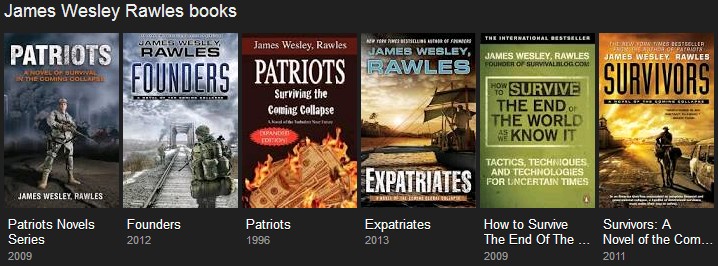
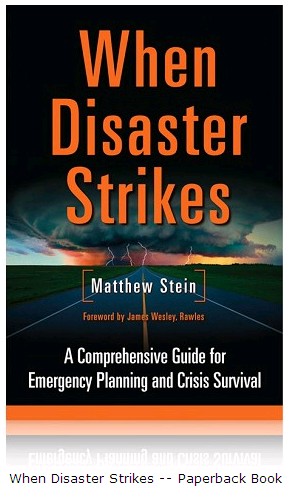
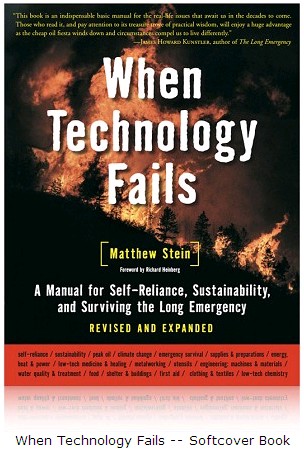


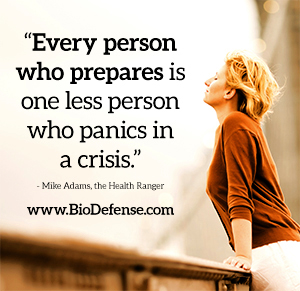
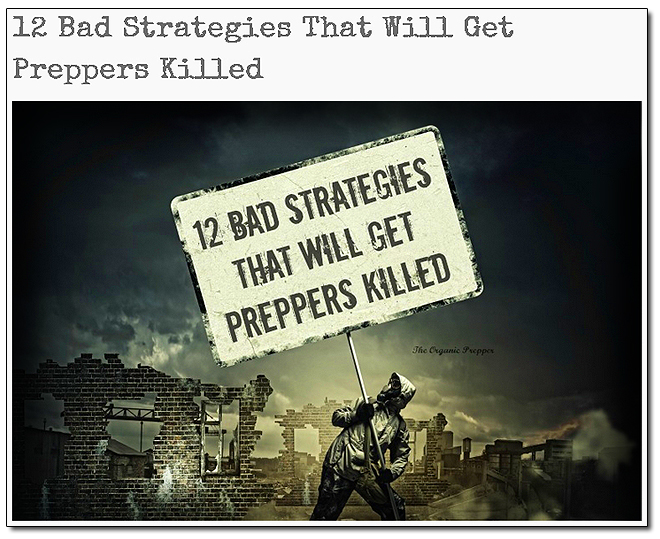
 put out
by experts. Whether we prepare for incidents small or large, we all ponder what we’d do if something
world-as-we-know-it-ending went down.
put out
by experts. Whether we prepare for incidents small or large, we all ponder what we’d do if something
world-as-we-know-it-ending went down. and
and 





